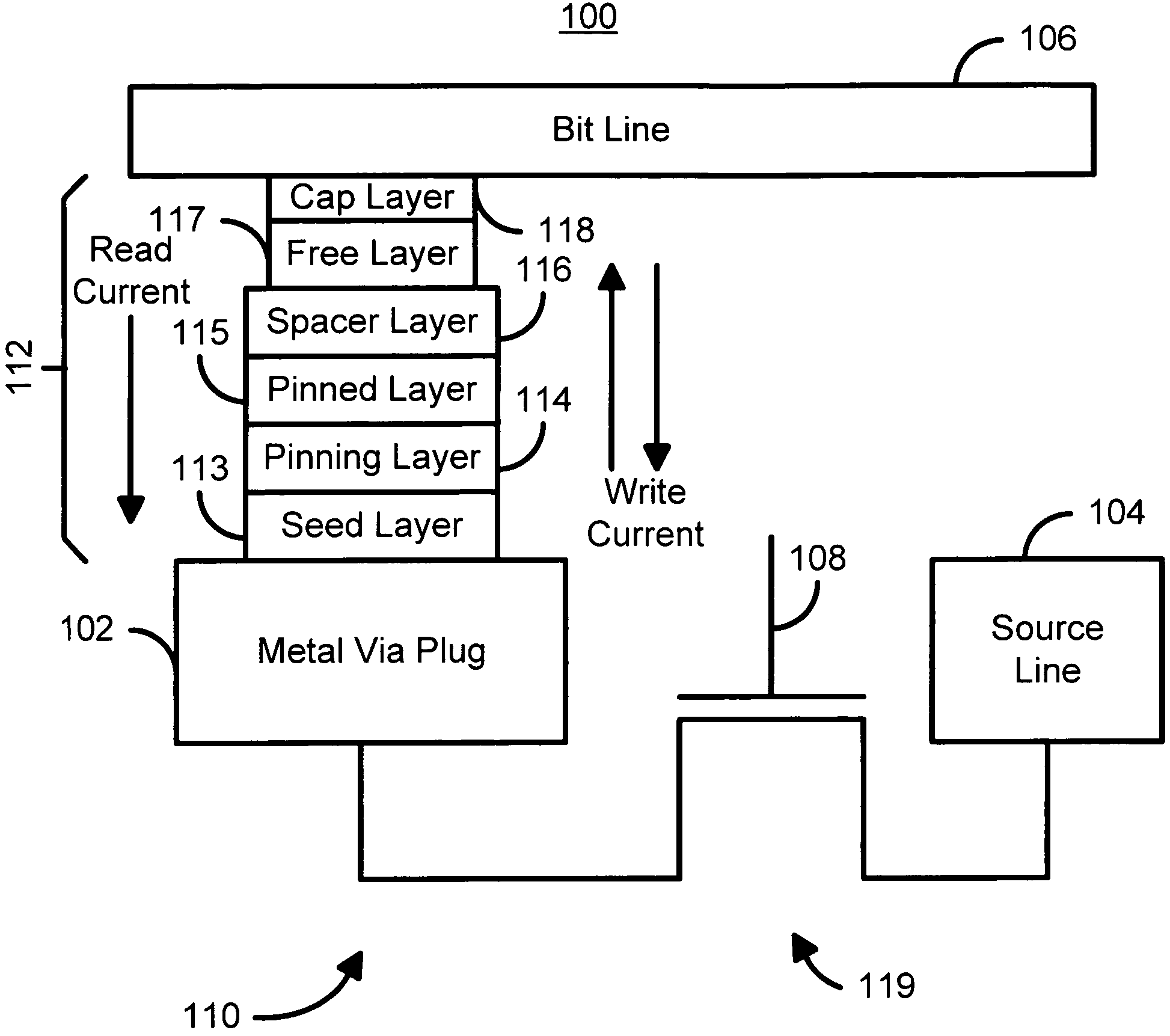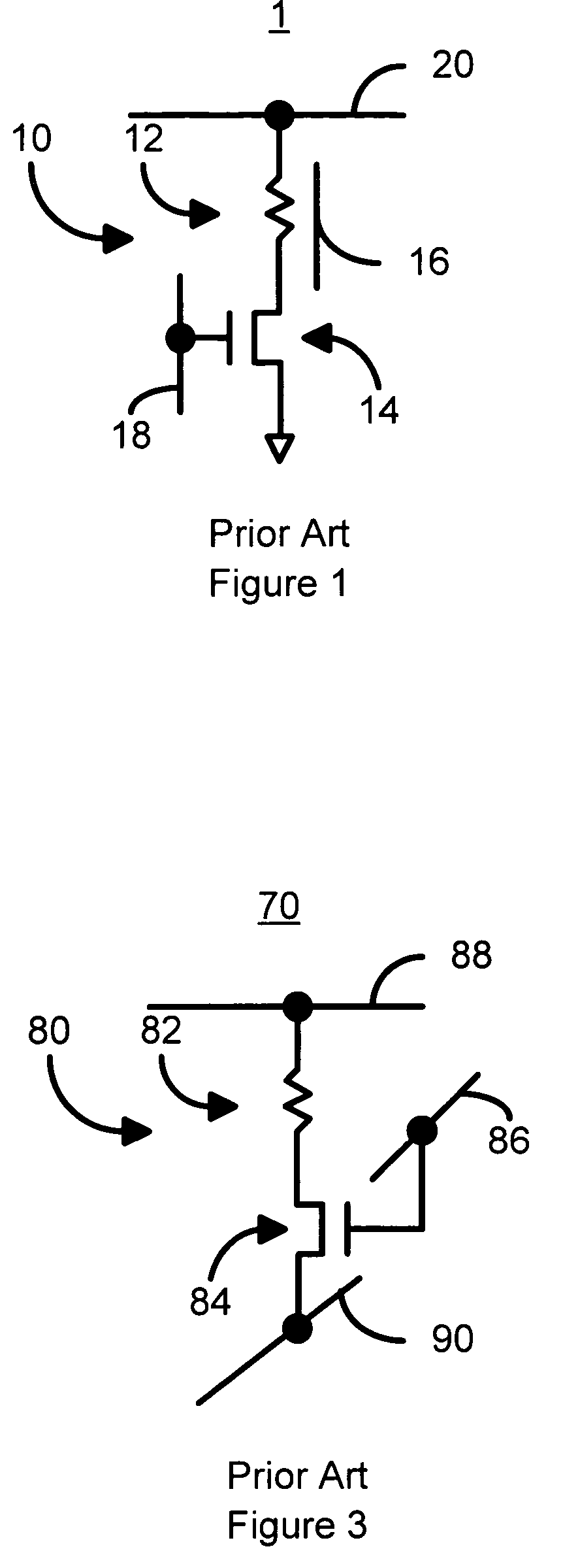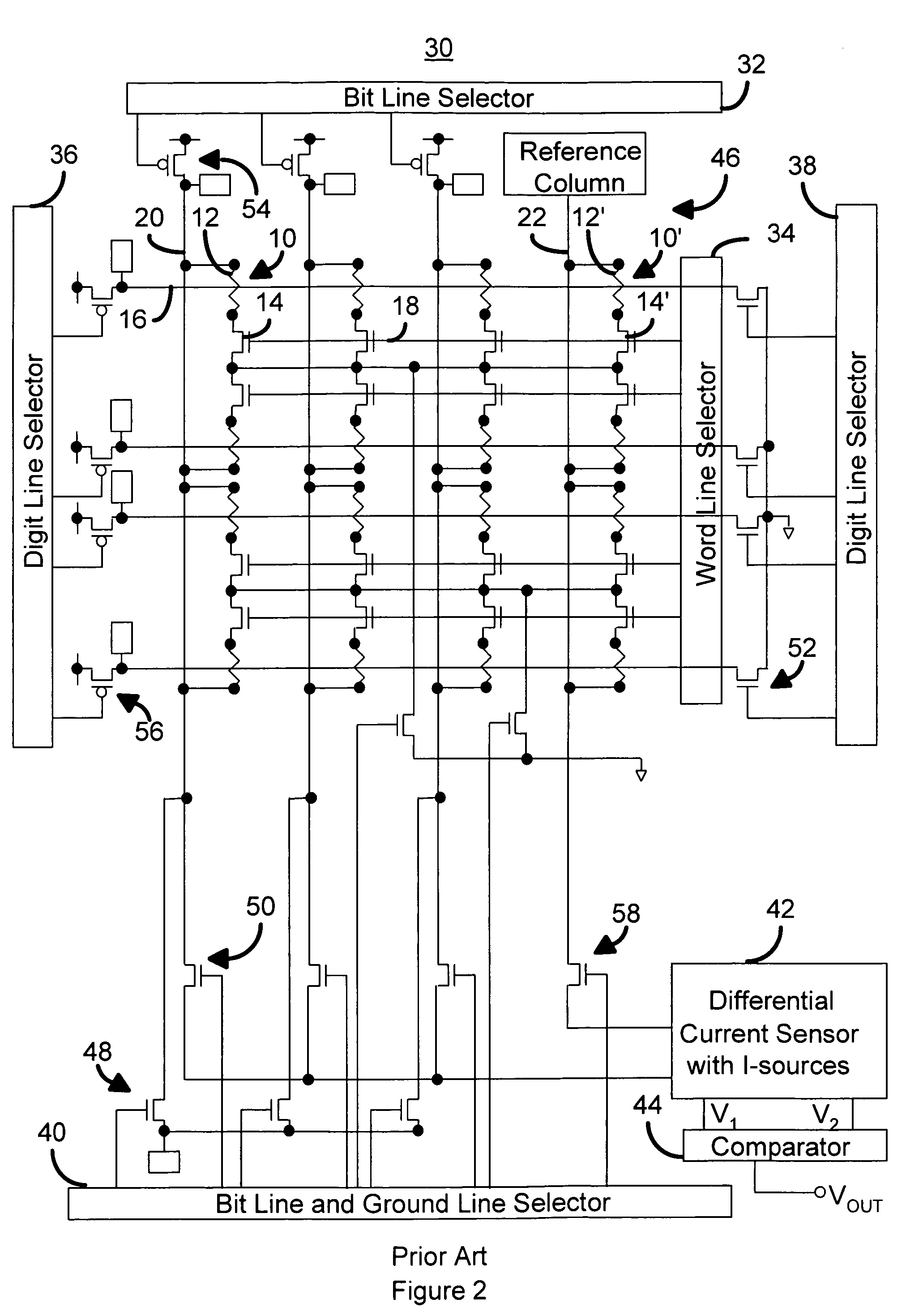Current driven switched magnetic storage cells having improved read and write margins and magnetic memories using such cells
a switched magnetic storage and read and write margin technology, applied in the field of magnetic memory systems, can solve the problems of inability to read and write in the near vicinity of the cell, inability to meet the needs of the user, so as to achieve the effect of improving the reading and writing margin
- Summary
- Abstract
- Description
- Claims
- Application Information
AI Technical Summary
Benefits of technology
Problems solved by technology
Method used
Image
Examples
embodiment 100
[0035]The magnetic memory 100, particularly the bit line 106, the source line 104, and the magnetic storage cell 110 are configured such that the read current(s) used are driven in a direction that does destabilize, and preferably reinforces, the low resistance state. In the embodiment 100 shown, the read current(s) would be driven from the bit line 106 to the source line 104. In a preferred embodiment, the magnetic element 112 is read by clamping the bit line at a constant voltage, VBL, while the source line is set at a lower voltage, VSL, such as ground voltage. The voltage difference between VBL and VSL is distributed between the magnetic element 112 and the selection device 119. A voltage at the metal via plug 102 is given by Vplug. VBL preferably is chosen such that the bias voltage (Vread) on the magnetic element, VBL-Vplug, is in the range for which the magnetic element 112 has the highest signal output. In one embodiment, this range is one hundred millivolts to five hundred ...
embodiment 120
[0040]The magnetic memory 120, particularly the bit line 126, the source line 124, and the magnetic storage cell 130 are configured such that the read current(s) used are driven in a direction that does not destabilize, and preferably reinforces, the low resistance state. In the embodiment 120 shown, the read current(s) would be driven from the bit line 126 to the source line 124. In operation, the bit line 126 may be clamped at a constant voltage while the source line 124 may be set at a lower voltage, such as ground voltage. The voltage difference between VBL and VSL is distributed between the magnetic element 132 and the transistor 142. VBL is preferably chosen such that the bias voltage (Vread) on the magnetic element (VBL-Vplug) is in a range such that magnetic element 120 has the largest signal output. This range is preferably on the order of one hundred to five hundred millivolts.
[0041]Referring to FIGS. 5 and 7, in a preferred embodiment, I2 is significantly higher than I3 b...
PUM
 Login to View More
Login to View More Abstract
Description
Claims
Application Information
 Login to View More
Login to View More - R&D
- Intellectual Property
- Life Sciences
- Materials
- Tech Scout
- Unparalleled Data Quality
- Higher Quality Content
- 60% Fewer Hallucinations
Browse by: Latest US Patents, China's latest patents, Technical Efficacy Thesaurus, Application Domain, Technology Topic, Popular Technical Reports.
© 2025 PatSnap. All rights reserved.Legal|Privacy policy|Modern Slavery Act Transparency Statement|Sitemap|About US| Contact US: help@patsnap.com



